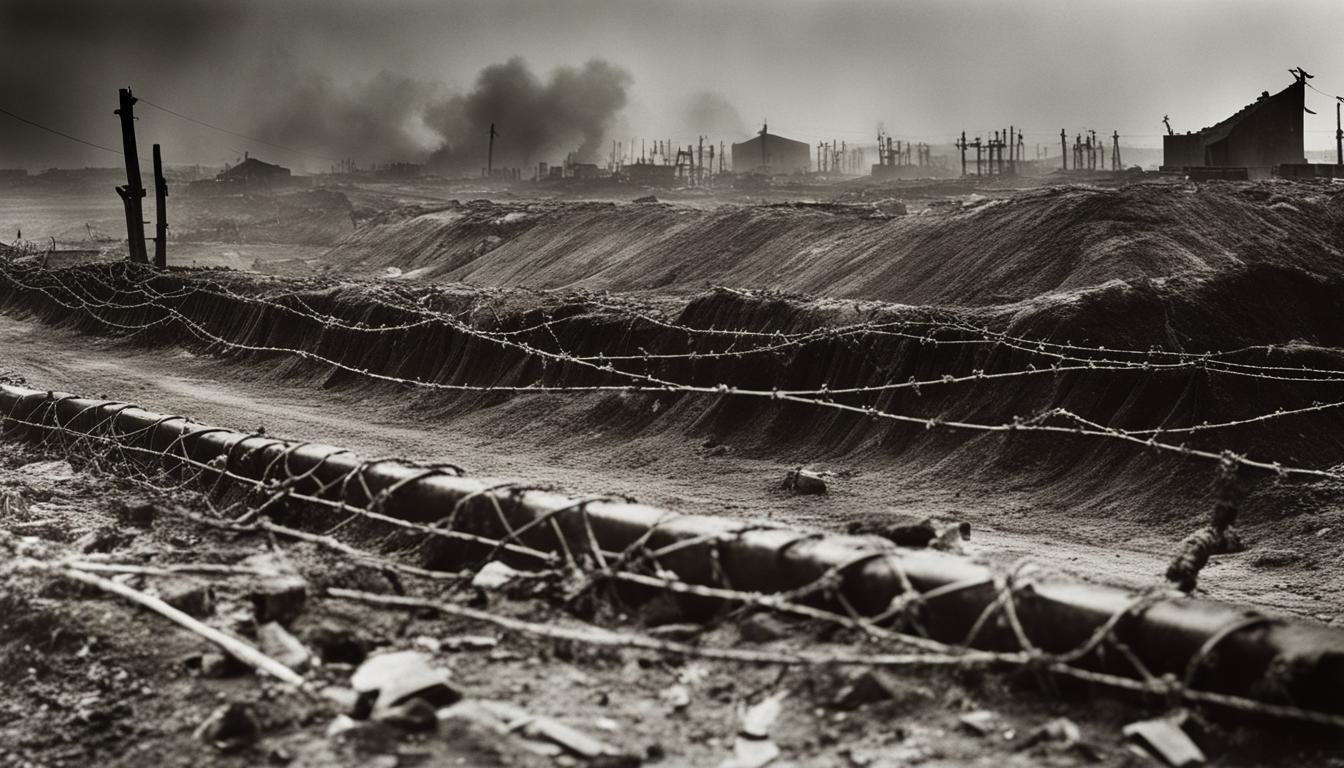The Cold War, which lasted from 1946 to 1991, was a period of political tension and military rivalry between the United States and the Soviet Union. It began when President Harry Truman decided to protect Iran from the Soviet Union, leading to a series of events that characterized the Cold War era. The key events, significant moments, and turning points of the Cold War shaped American impact on the world stage during this period.
Key Takeaways:
- The Cold War lasted from 1946 to 1991, marked by political tension and military rivalry between the United States and the Soviet Union.
- President Truman’s decision to protect Iran from the Soviet Union ignited the start of the Cold War.
- Important events such as the Truman Doctrine, the Marshall Plan, and the Berlin Blockade shaped the course of the Cold War.
- The Cuban Missile Crisis and the Vietnam War were major milestones of the Cold War.
- The collapse of the Soviet Union in 1991 marked the end of the Cold War.
The Start of the Cold War – Protecting Iran
The Cold War began in 1946 with a significant event that set the stage for decades of political tension and military rivalry between the United States and the Soviet Union. It all started when President Truman made the decision to protect Iran from the Soviet Union’s occupation. During World War II, the Soviets had occupied northern Iran, while the Western allies used the country as a supply line to the Red Army. However, after the war, the Western allies withdrew, leaving the Soviets in control.
Truman, concerned about Soviet expansionism, sent an ultimatum to Stalin, demanding the withdrawal of Soviet forces from Iran. To back up his words, the President threatened to deploy US forces in the Persian Gulf if the Soviets did not comply. This ultimatum marked the beginning of the Cold War, as it demonstrated the United States’ determination to protect its interests and contain Soviet influence.
With the protection of Iran, the United States set a precedent that would shape the Cold War era. It established the United States as a global power willing to defend its allies and confront the Soviet Union head-on. This event was just the beginning of a complex and tumultuous period in history that would have lasting effects on the entire world.
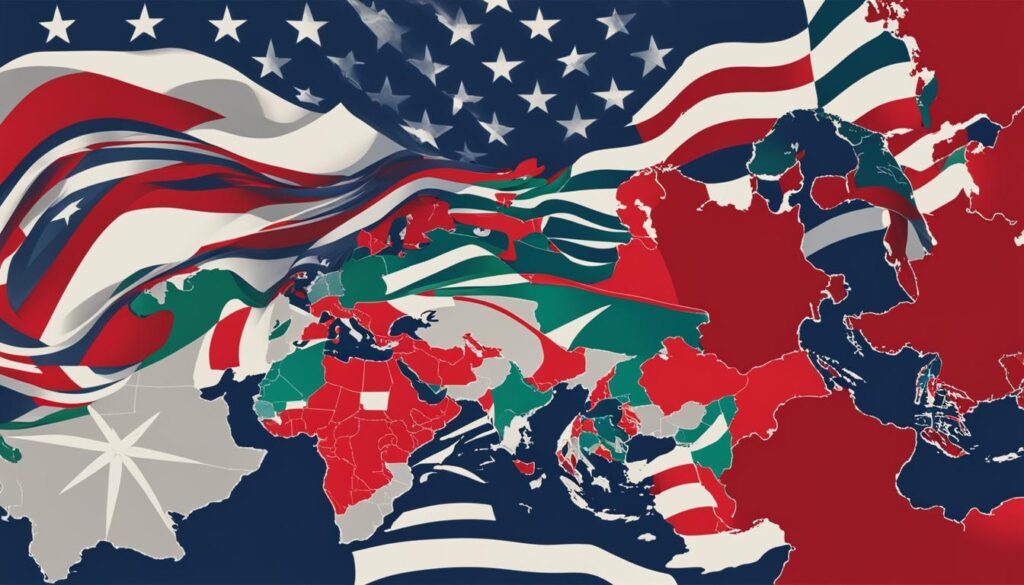
The Impact on the Cold War Timeline
| Year | Event |
|---|---|
| 1946 | The United States protects Iran from Soviet occupation, marking the start of the Cold War |
| 1947 | President Truman implements the Truman Doctrine and responds to the Greece-Turkey Crisis |
| 1947 | The Marshall Plan is introduced to aid Europe’s recovery from World War II |
| 1948 | The Soviet Union blockades West Berlin, leading to the formation of NATO |
The Truman Doctrine and the Greece-Turkey Crisis
The Truman Doctrine, implemented by President Truman in 1947, was a significant turning point in the Cold War. It was a response to the Greece-Turkey Crisis, where the Greek government faced a Communist uprising and appealed for international help. Truman, recognizing the need to contain Soviet expansionism, asked Congress for economic and military aid to both Greece and Turkey. This aid was authorized and funded, marking a decisive shift in American foreign policy.
With the implementation of the Truman Doctrine, the United States demonstrated its commitment to supporting countries threatened by communism and its willingness to intervene militarily to protect its interests. This policy set the stage for US involvement in conflicts around the world, as the United States sought to prevent the spread of communism and ensure the security of democratic nations.
The Greece-Turkey Crisis not only highlighted the ideological divisions of the Cold War but also emphasized the strategic importance of Europe and the Mediterranean region. It marked a clear shift in American foreign policy towards a more assertive and interventionist approach. The Truman Doctrine and the subsequent aid to Greece and Turkey paved the way for the formation of alliances such as NATO and set the stage for future US military interventions in conflicts like the Korean War and the Vietnam War.
The Impact of the Truman Doctrine
The Truman Doctrine had a profound impact on the Cold War and American foreign policy. It marked a shift from a policy of isolationism to one of active engagement on the world stage. The doctrine not only provided economic and military aid to Greece and Turkey but also served as a blueprint for future American interventions to contain communism.
“I believe that it must be the policy of the United States to support free peoples who are resisting attempted subjugation by armed minorities or by outside pressures.” – President Harry S. Truman
The Greece-Turkey Crisis and the Truman Doctrine set the stage for the subsequent decades of the Cold War, shaping American foreign policy and influencing the dynamics of the global power struggle. It demonstrated the United States’ commitment to defending democratic values and its determination to counter the spread of communism, laying the groundwork for the ideological battles and proxy wars that would define the Cold War era.
| Turning Points of the Cold War | Key Events of the Cold War | Significant Moments of the Cold War |
|---|---|---|
| The Truman Doctrine and the Greece-Turkey Crisis | The Berlin Blockade and the Formation of NATO | The Cuban Missile Crisis and Nuclear Tensions |
| The Marshall Plan and European Recovery | The Vietnam War and Anti-War Protests | Détente and Arms Control |
| The Collapse of the Soviet Union |
The Marshall Plan and European Recovery
In 1947, Secretary of State George C. Marshall introduced the Marshall Plan, an economic aid program aimed at helping Western Europe recover from the devastation of World War II. The plan provided significant financial assistance to European countries, helping to rebuild their economies and foster stability.
This event, known as the Marshall Plan, was a crucial turning point in the Cold War. It demonstrated American leadership and commitment to supporting democracy and the capitalist system in the face of Soviet expansionism. The Marshall Plan also played a vital role in preventing the spread of communism in war-torn Europe.
The impact of the Marshall Plan was immense. It helped to revitalize European economies, improve living standards, and strengthen political ties between the United States and its allies. By investing in the recovery of Western Europe, the United States also created a strong economic bloc that served as a bulwark against Soviet influence.
| Key Points | Details |
|---|---|
| Introduction | The Marshall Plan was introduced in 1947. |
| Aim | The plan aimed to provide economic aid to Western Europe. |
| Impact | The plan helped to rebuild economies, foster stability, and prevent the spread of communism. |
| Significance | The Marshall Plan demonstrated American leadership and commitment to supporting democracy. |
The Marshall Plan not only provided crucial financial assistance but also symbolized the United States’ global role as a champion of democracy and a defender against Soviet aggression. It laid the foundation for the post-war economic recovery of Western Europe and played a pivotal role in shaping the Cold War era.
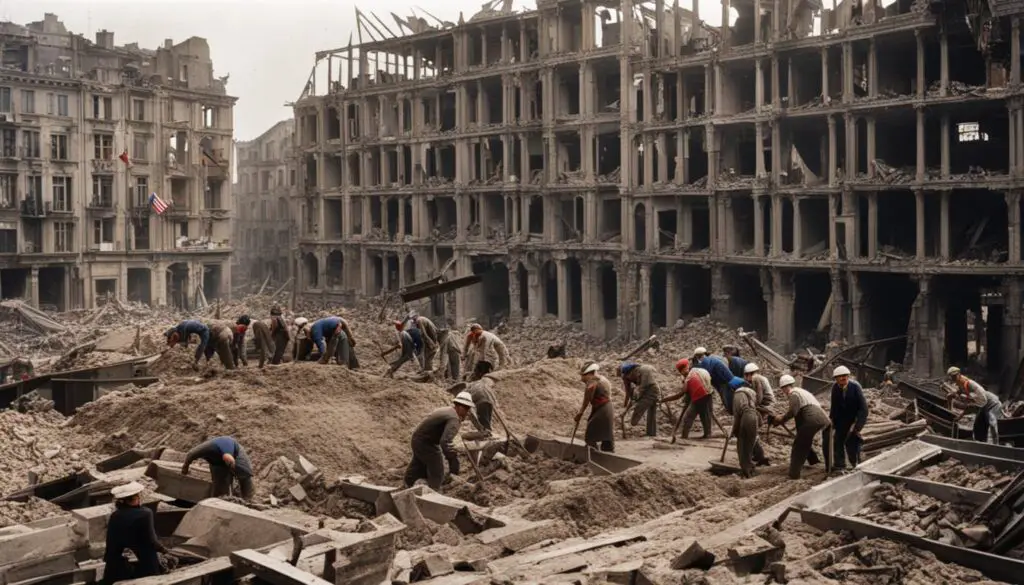
The Berlin Blockade and the Formation of NATO
In 1948, the Soviet Union blockaded West Berlin, cutting off all land and water routes to the city. This event, known as the Berlin Blockade, was a significant moment in the Cold War. In response, the United States and its Western European allies launched the Berlin Airlift, providing food and supplies to the people of West Berlin by air. The Berlin Airlift lasted for 11 months and delivered over 2 million tons of supplies, ensuring the survival of the city’s residents.
The Berlin Blockade highlighted the division between East and West and the growing tensions between the United States and the Soviet Union. It also led to the formation of the North Atlantic Treaty Organization (NATO) in 1949. NATO was a military alliance formed by the United States, Canada, and several European countries to counter the threat of Soviet aggression. The alliance affirmed collective defense, stating that an attack on one member would be considered an attack on all. NATO played a crucial role in deterring Soviet expansionism throughout the Cold War.
| Year | Event |
|---|---|
| 1948 | The Soviet Union blockades West Berlin, leading to the Berlin Airlift |
| 1949 | Formation of NATO as a response to the Berlin Blockade and growing Soviet threat |
The Berlin Blockade and the formation of NATO were pivotal moments in the Cold War, underscoring the tensions between the United States and the Soviet Union. The Berlin Airlift demonstrated the determination of the Western powers to support their allies and protect the principles of democracy. NATO provided a collective defense mechanism and served as a deterrent against any further Soviet aggression in Europe.
The Berlin Blockade and the formation of NATO were decisive in shaping the Cold War and the global balance of power. These events solidified the division between East and West and set the stage for the ideological and military standoff that defined the era. The significance of the Berlin Blockade and NATO cannot be overstated, as they represented key turning points in the escalating conflict between the United States and the Soviet Union.
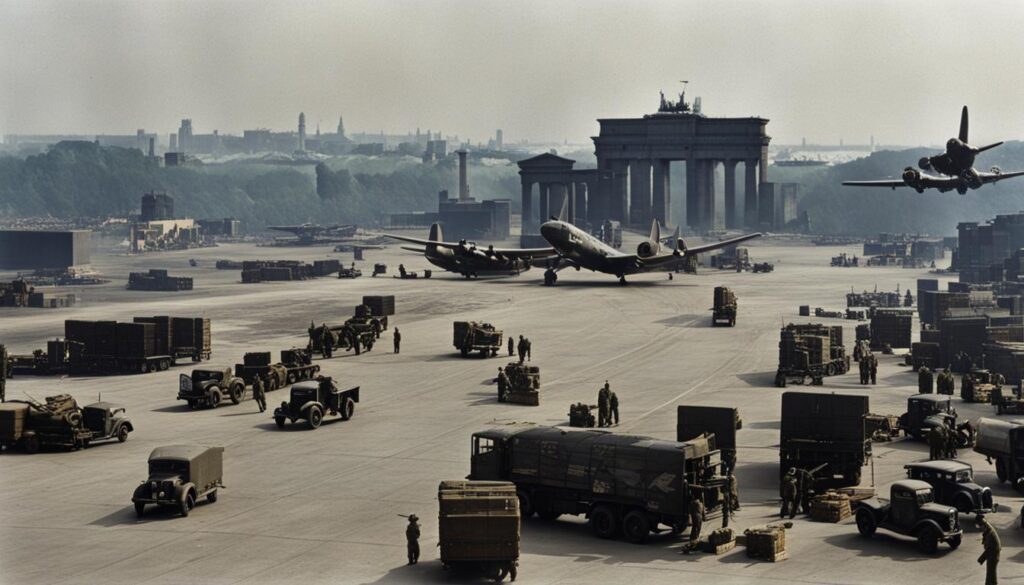
The Cuban Missile Crisis and Nuclear Tensions
In 1962, the world came close to nuclear war during the Cuban Missile Crisis. The United States discovered that the Soviet Union was installing nuclear missiles in Cuba, just 90 miles from the coast of Florida. This event led to a tense standoff between the two superpowers, with both sides on the brink of launching nuclear weapons. Ultimately, a peaceful resolution was reached, but the Cuban Missile Crisis highlighted the intense nuclear tensions of the Cold War.
The Cuban Missile Crisis was a significant moment and a major turning point in the Cold War. It was the closest the world had ever come to nuclear war, and it exposed the alarming reality of the arms race between the United States and the Soviet Union. The crisis lasted for 13 tense days, during which the world held its breath, fearing the catastrophic consequences of a potential nuclear conflict. The resolution of the crisis, known as the “thirteen days of October,” demonstrated the importance of diplomacy and negotiation in defusing tensions between the superpowers.
The Cuban Missile Crisis had far-reaching implications for the Cold War. It led to a reevaluation of nuclear strategies and the implementation of measures to prevent similar crises in the future. Both the United States and the Soviet Union recognized the need for arms control and took steps towards nuclear disarmament, leading to the signing of the Partial Nuclear Test Ban Treaty in 1963. The crisis also highlighted the dangers of proxy wars and the need for alternative means of resolving conflicts without resorting to nuclear weapons.
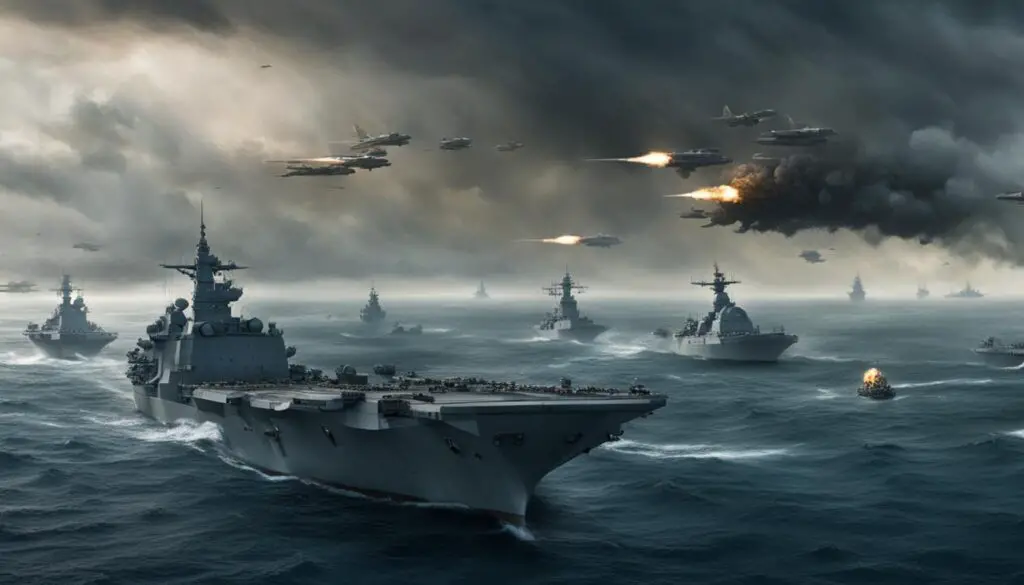
Overall, the Cuban Missile Crisis was a major milestone in the Cold War, serving as a stark reminder of the devastating consequences of nuclear conflict. It emphasized the importance of diplomacy, arms control, and peaceful resolutions to prevent the escalation of tensions between superpowers. The legacy of the Cuban Missile Crisis continues to shape international relations and nuclear policies today, as the world strives to maintain stability and prevent the repetition of such a crisis.
The Vietnam War and Anti-War Protests
The Vietnam War, which lasted from 1955 to 1975, was a significant event of the Cold War. The United States supported South Vietnam in its fight against the communist North, but the war was highly controversial at home. It sparked widespread anti-war protests and became a symbol of the divisions within American society. The Vietnam War represented a major milestone in the Cold War, with the United States attempting to contain Soviet influence in Southeast Asia.
Throughout the course of the Vietnam War, opposition to U.S. involvement grew steadily, fueled by the increasing number of American casualties and the controversial nature of the conflict. Anti-war sentiment was particularly strong among young people, leading to large-scale protests and demonstrations across the country. From peaceful protests to acts of civil disobedience, the anti-war movement became a powerful force that challenged the government’s policies and brought the war’s human toll to the forefront of public consciousness.
The Vietnam War was a turning point in American history, with the anti-war protests reflecting a deep dissatisfaction with the country’s military intervention and foreign policy. The protests were not just a rejection of the war itself, but also a broader critique of the Cold War mentality and a call for social change. The movement ultimately had a significant impact on U.S. policy towards the war and helped shape public opinion for years to come.
The Vietnam War and the anti-war protests revealed the deep divisions within American society and underscored the challenges faced by the United States in its efforts to project power and contain communism. It was a period marked by intense political activism, social upheaval, and a reevaluation of American values. The legacy of the Vietnam War continues to resonate today, reminding us of the profound impact of war and the power of public dissent in shaping national discourse.
The Impact of the Vietnam War
The Vietnam War had a lasting impact on American society and foreign policy. It shattered the notion of American invincibility and undermined public trust in the government’s ability to conduct military interventions. The war also highlighted the need for greater transparency and accountability in decision-making processes, leading to a reassessment of the role of the media in wartime reporting.
The anti-war protests played a crucial role in shaping public opinion and influencing policy decisions. They helped pave the way for a gradual withdrawal of U.S. troops from Vietnam and contributed to a shift in public opinion towards a more cautious approach to military interventions.
| Impact of the Vietnam War | Key Events |
|---|---|
| Loss of American lives | 1968 Tet Offensive |
| Divisions within American society | 1971 Pentagon Papers leak |
| Anti-war protests and civil unrest | 1973 Paris Peace Accords |
| Challenges to U.S. foreign policy | 1975 Fall of Saigon |
The Détente Era: Reducing Tensions and Promoting Cooperation
In the 1970s, a crucial period of détente emerged between the United States and the Soviet Union, marking a significant milestone in the Cold War. Détente, meaning “relaxation” in French, aimed to reduce tensions and foster increased cooperation between the two superpowers. This period of relative calm and diplomatic engagement was a departure from the previous decades of intense rivalry and brinkmanship.
Détente was characterized by several key events and agreements, including the Strategic Arms Limitation Talks (SALT) and the Anti-Ballistic Missile (ABM) Treaty. The SALT agreements represented a significant step toward arms control, limiting the number of strategic nuclear weapons possessed by both nations. The ABM Treaty, on the other hand, sought to restrict the development, testing, and deployment of anti-ballistic missile systems. These agreements were crucial in reducing the risk of nuclear war and creating a more stable international environment.
During the détente era, cultural and scientific exchanges between the United States and the Soviet Union were also encouraged, further promoting cooperation and understanding between the two nations. These exchanges allowed citizens from both countries to interact and learn from each other, fostering goodwill and breaking down some of the long-standing cultural barriers.
While détente did not completely eliminate tensions between the United States and the Soviet Union, it represented a significant shift in their relationship. The era of détente showed that even during the height of the Cold War, peaceful coexistence and dialogue were possible. It demonstrated that diplomacy and negotiation could play a vital role in managing conflicts and avoiding the dangers of direct confrontation.
The Impact of Détente
The détente era had a profound impact on the course of the Cold War and the global geopolitical landscape. By reducing tensions and promoting cooperation, it helped to mitigate the risk of a catastrophic nuclear conflict. The SALT agreements, in particular, set important precedents for future arms control negotiations and established a framework for managing the nuclear arms race.
Furthermore, the détente period paved the way for increased dialogue and communication between the United States and the Soviet Union. While the ideological differences between the two nations remained, the era of détente demonstrated that peaceful coexistence and engagement were possible, even in the midst of a global power struggle.
However, the détente era was not without its challenges and limitations. The Soviet invasion of Afghanistan in 1979 and subsequent deterioration of relations between the United States and the Soviet Union served as a reminder that trust and cooperation could be fragile. Nevertheless, the détente period remains an important chapter in Cold War history, highlighting the potential for dialogue, compromise, and peaceful coexistence even in the most adversarial of circumstances.
| Détente Achievements | Détente Limitations |
|---|---|
|
|
blockquote: “Détente demonstrated that diplomacy and negotiation could play a vital role in managing conflicts and avoiding the dangers of direct confrontation.”
Overall, the era of détente represented a significant shift in Cold War dynamics. It showed that during a time of intense rivalry and ideological confrontation, peaceful coexistence was possible through dialogue, cooperation, and the pursuit of mutual interests. The diplomatic achievements and cultural exchanges of the détente era paved the way for subsequent efforts to reduce tensions and promote stability in the post-Cold War world.
The Collapse of the Soviet Union
In 1991, the Cold War came to an end with the collapse of the Soviet Union. This monumental event marked a turning point in the history of the Cold War and had significant implications for global politics. The Soviet Union’s dissolution was caused by a combination of economic inefficiency, political unrest, and the inability to sustain the arms race with the United States.
The Cold War was characterized by intense competition between the United States and the Soviet Union, with both superpowers engaging in proxy conflicts and a nuclear arms race. However, by the late 1980s, the Soviet economy was in decline, and the country was facing internal tensions. Soviet leader Mikhail Gorbachev implemented reforms that aimed to address these challenges, but they ultimately led to the unraveling of the Soviet Union.
The collapse of the Soviet Union had far-reaching consequences. It marked the end of an era and signaled the victory of the United States and its democratic values over the Soviet Union’s communist ideology. The geopolitical landscape shifted dramatically, and many former Soviet republics gained independence. This event also had a profound impact on global politics, as it reshaped alliances and power dynamics around the world.
The Legacy of the Cold War
The legacy of the Cold War continues to shape the world we live in today. It left behind a divided Europe, with the Iron Curtain separating East and West. The arms race during the Cold War led to the proliferation of nuclear weapons and heightened fears of a global nuclear conflict. The ideological struggle between democracy and communism influenced the policies and actions of nations for decades.
The Cold War also had a lasting impact on proxy conflicts that occurred in various regions, including Vietnam, Korea, and Central America. These conflicts resulted in significant loss of life and had a profound effect on the people and societies involved. The scars of the Cold War are still felt in these regions today.
In conclusion, the collapse of the Soviet Union in 1991 marked the end of the Cold War and had far-reaching consequences for global politics and the world order. It represented the culmination of decades of political and military rivalry between the United States and the Soviet Union. The legacy of the Cold War continues to shape our world, reminding us of the importance of diplomacy, peaceful coexistence, and the pursuit of a stable and prosperous international order.
Legacy of the Cold War
The Cold War, which lasted from 1946 to 1991, left a lasting legacy that continues to shape global politics today. This period of political tension and military rivalry between the United States and the Soviet Union had several important periods and major milestones that had significant impacts on the world. From the start of the Cold War with the protection of Iran to the collapse of the Soviet Union, the Cold War era dates are marked by events that shaped the geopolitical landscape.
One of the major legacies of the Cold War is the division of Europe into two blocs: the Western capitalist countries led by the United States and the Eastern communist countries led by the Soviet Union. This division was characterized by ideological differences and led to the establishment of the Iron Curtain, a physical and ideological barrier separating the two blocs. The division of Europe had far-reaching consequences and shaped the politics, economies, and cultures of the countries involved.
Another important legacy of the Cold War is the proliferation of nuclear weapons. The arms race between the United States and the Soviet Union during this period led to the development and testing of increasingly powerful nuclear weapons. The fear of nuclear war and the concept of mutually assured destruction became significant factors in international relations. The legacy of the arms race can still be seen today in the global efforts to prevent the spread of nuclear weapons and promote disarmament.
| Important Periods of the Cold War | Major Milestones of the Cold War |
|---|---|
| The Start of the Cold War – Protecting Iran | The Collapse of the Soviet Union |
| The Truman Doctrine and the Greece-Turkey Crisis | The Cuban Missile Crisis and Nuclear Tensions |
| The Marshall Plan and European Recovery | The Vietnam War and Anti-War Protests |
| The Berlin Blockade and the Formation of NATO | Détente and Arms Control |
In the words of President John F. Kennedy, “Mankind must put an end to war, or war will put an end to mankind.” This quote encapsulates the overarching fear and tension of the Cold War era. The struggle between democracy and communism, the proxy wars fought in various parts of the world, and the constant threat of nuclear annihilation all contributed to the enduring legacy of the Cold War.
In summary, the Cold War left a lasting legacy that continues to impact global politics. The division of Europe, the proliferation of nuclear weapons, and the ideological struggle between democracy and communism all shaped the world during the Cold War era. Understanding the important periods and major milestones of the Cold War is crucial for comprehending the historical significance of this period and its ongoing impact on international relations.
Conclusion
The Cold War was a pivotal period in history, with significant moments, key events, and major milestones that shaped American impact on the world stage. Spanning from 1946 to 1991, this era was characterized by political tension and military rivalry between the United States and the Soviet Union. Understanding the Cold War timeline and its important periods is crucial to comprehending its far-reaching implications.
From the start of the Cold War with the protection of Iran to the collapse of the Soviet Union, this historical timeline reveals the complex interplay of global politics, military strategies, and cultural divisions. The Cold War era dates saw the rise of key turning points, such as the Truman Doctrine, the Marshall Plan, and the formation of NATO, that shaped the course of this conflict.
The Cold War’s legacy continues to reverberate in today’s geopolitics. From the arms race and proxy wars to the ideological struggle between democracy and communism, the Cold War had a profound impact on the lives of people around the world. Its effects can still be felt in the proliferation of nuclear weapons and the ongoing tensions between nations.
In comprehending the Cold War’s historical timeline and its impact on American history and the world at large, we gain valuable insights into the forces that shaped our present-day global landscape. It is crucial to remember the key events, significant moments, and turning points of the Cold War in order to navigate the complexities of our world today.
FAQ
What was the Cold War?
The Cold War was a period of political tension and military rivalry between the United States and the Soviet Union that lasted from 1946 to 1991.
When did the Cold War start?
The Cold War started in 1946 when President Truman decided to protect Iran from the Soviet Union.
What events shaped the Cold War?
Key events that shaped the Cold War include the Truman Doctrine, the Marshall Plan, the Berlin Blockade, the Cuban Missile Crisis, the Vietnam War, and the collapse of the Soviet Union.
What were the significant moments of the Cold War?
Significant moments of the Cold War include the start of the Cold War with the protection of Iran, the implementation of the Truman Doctrine, the introduction of the Marshall Plan, the Berlin Blockade and formation of NATO, the Cuban Missile Crisis, the Vietnam War, the period of détente and arms control, and the collapse of the Soviet Union.
How did the Cold War impact American history?
The Cold War had a significant impact on American history, shaping American involvement in conflicts around the world, leading to the proliferation of nuclear weapons, and influencing policies and actions of nations for decades.
What was the legacy of the Cold War?
The legacy of the Cold War includes the geopolitical landscape, the division of Europe into two blocs, and the lasting impact on global politics, military strategies, and cultural divisions.
Source Links
- https://www.archives.gov/research/foreign-policy/cold-war/symposium/cleveland.html
- https://www.whitehouse.gov/wp-content/uploads/2022/10/Biden-Harris-Administrations-National-Security-Strategy-10.2022.pdf
- https://www.nps.gov/articles/minuteman-missile-national-historic-site-protecting-a-legacy-of-the-cold-war-teaching-with-historic-places.htm
